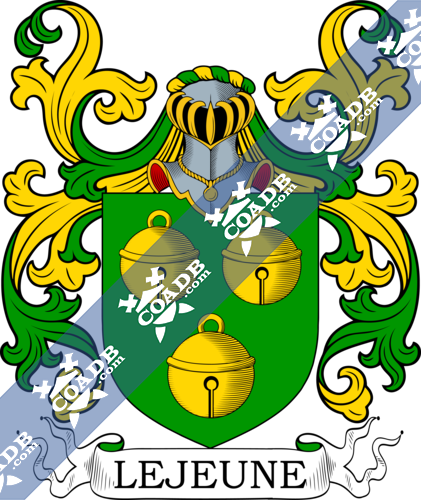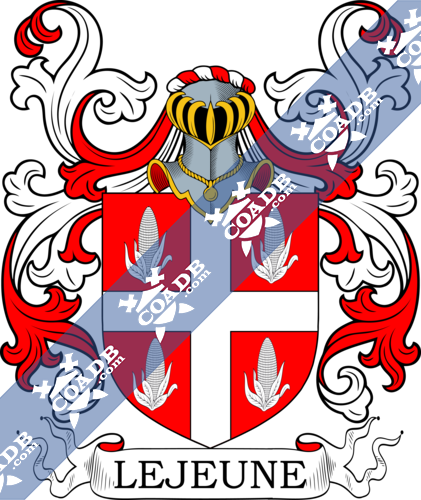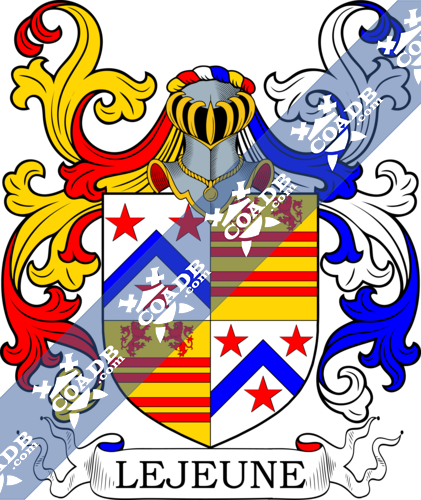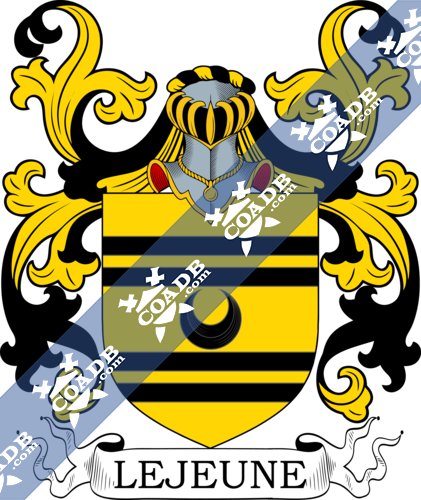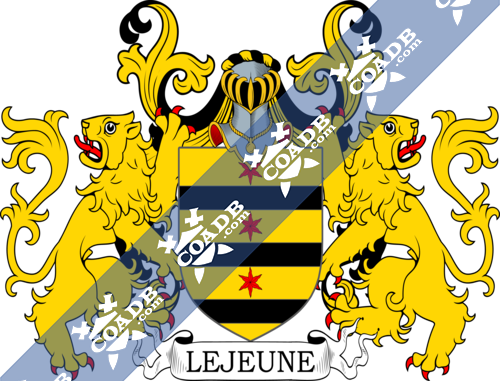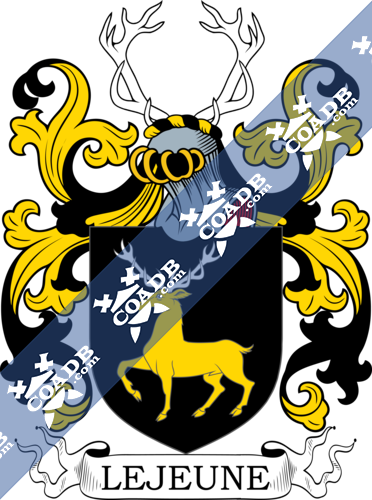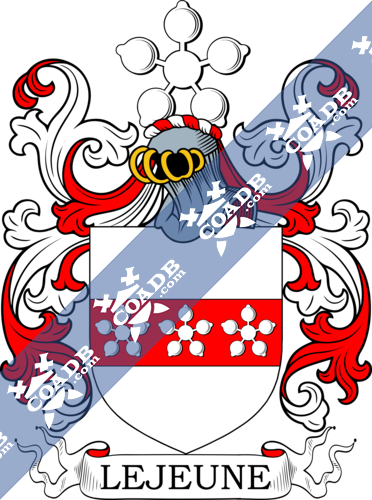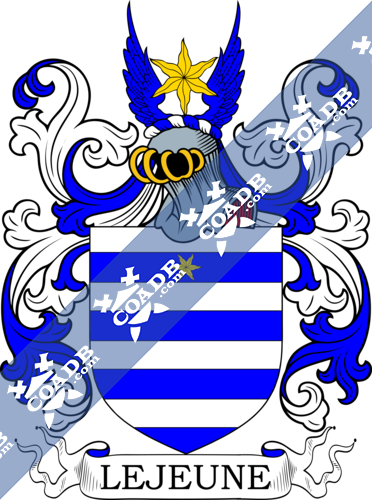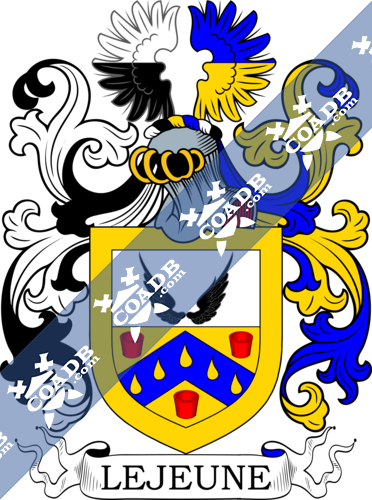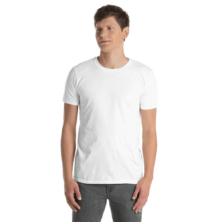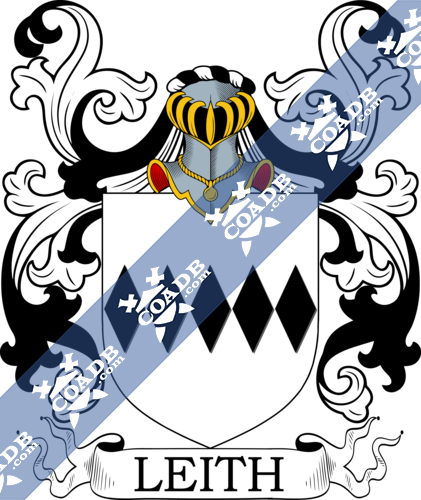Lejeune Family Crest, Coat of Arms and Name History
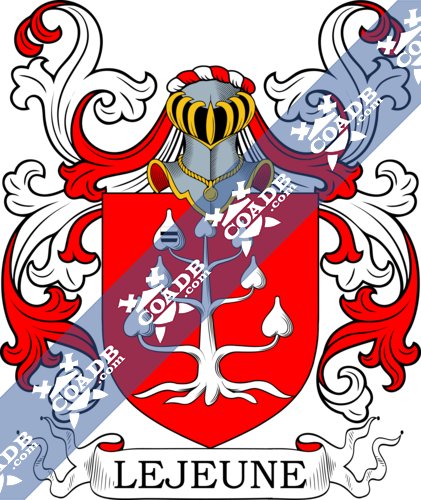
Lejeune Coat of Arms Gallery
Don’t know which Coat of Arms is yours?
We can do a genealogical research. Find out the exact history of your family!
Learn MoreLejeune Origin:
France, England
Origins of Lejeune:
The early recorded spelling of this name are Jeune, Lejeune, and June. It is an interesting, unique and an English surname, but have early ancient French origins. Perhaps popularized into England by the Normans instantly after the famous attack or war of the year 1066, when French became a professional language for three centuries. The origin of this surname originally evolved from the word “jeune” meaning “young” and it was originally a nickname or term of love and affection, for a young man who loves someone. About 15% of all surnames are considered to have originally been nicknames, so this one comes in the same arrangement as Dear, Darling, and Love. According too early development of the spellings of the names, the developmental name inculded Lajeunesse, Lajeunne, Lejeune, Lejeune, Jeunesse, Jeune, Jeunet, Jeuneau, Jeuneaux and many more.
Variations:
More common variations are: le Jeune, Lejeaune, Lejeuene, Lejeuane, Lejeunne, Lejeunie, Lejune, Lejeun, le Jeaune, Lajeune.
England:
The origins of the surname Lejeune first found in Brittany, where their people held a family seat from early times.
The very first recording spelling of the family was shown to be that of one Richard le Jeune, which listed in the register of the abbey of Lichfield, Staffordshire in the year 1199. While later in its inherited forms included Matilda Jun, which mean a landholder in the Hundred revolutions of Cambridge for the year 1279, and the name John June, also listed as John le June, who arose in the premium revolutions for the province of Yorkshire in the year 1301. It was during the time of King Edward 1st of England and who was known to be the “The Hammer of the Scots,” dated 1272 – 1307. The origin of surnames during this period became a necessity with the introduction of personal taxation. It came to be known as Poll Tax in England. In the 12th century, surnames were first listed anywhere in the world in England, and also in Germany. After that they spread fastly in more European countries, till the 19th century outside of the main area, because of battle and lack of ability, recordings were unusual or often none remained.
United States:
People of the Lejeune surname also settled in the United States in the 18th century. Individuals who settled in the 18th Century included Anne LeJeune, Antoine LeJeune, and Blaise LeJeune arrived in Maryland in the year 1763. Felicite LeJeune and Jean LeJeune arrived in New Orleans, La in the year 1785.
Australia:
Some people of the Lejeune surname also arrived in Australia in the 19th century included Mary E. LeJeune arrived in Adelaide, Australia aboard the ship ” John Munn” in the year 1849.
Here is the population distribution of the last name Lejeune: United States 6,730; England 333; Australia 633; Canada 1,011; Germany 1,042; Switzerland 369; Mexico 288; Netherlands 421; Belgium 6,592; Camernoon 396
Notable People:
C. A. Lejeune (1897–1973), was a famous British writer. He was the youngest child in a large Victorian family that occupied at 10, Wilmslow Road, Withington, Manchester.
Claude Le Jeune (1528/1530–1600), was a French song writer and musician.
Florian Lejeune (1991-), was a French football player.
Iry LeJeune (1928–1955), was an American musician and composer.
Jean Lejeune (1592–1672), was a French saint and religious man.
Jean-Denis Lejeune was a Belgian advocate and revolutionary man.
Jérôme Lejeune (1926–1994), was a French researcher of inheritance.
John A. Lejeune (1867–1942), was the 13th commander or trainer of the United States sea troops.
Kevin Lejeune was a famous French soccer player. He was born in the year 1985.
Lisanne Lejeune was a superb Dutch hockey player who was born in the year 1963.
Louis-François Baron Lejeune (1775-1848), was a common French painter.
Michel Lejeune (linguist), was a French specialist in language.
Michel Lejeune (politician), was a French politics man.
Norman LeJeune was an American football player. He was born in the year 1980.
Olivier Le Jeune was a Canadian prisoner.
Paul Le Jeune (1591–1664), was a French Jesuit preacher in Canada.
Paul Lejeune-Jung (1882–1944), was a German business analyst and politician. He started his services in the year 1591 and retired from his post in the year 1944.
Blazons & Genealogy Notes
1) Jersey De sable à un cerf passant d’or ramé d’argent Cimier une ramure de cerf d’argent Devise FAIRE SANS DIRE. English: Sable a stag passant or antlers argent Crest: the antlers of the stag argent.
2) Paris D’azur au chevron d’argent chargé de trois étoiles d’azur acc en chef de deux trèfles et en pointe d’une foi du second. English: Azure a chevron argent charged with three etoiles azure surrounded by in chief two trefoils and in base by a oath of the 2nd [i.e. two hands palm to palm in fess, as if in a handshake].
3) Poligny (Franche-Comté) D’azur au sautoir d’or ch d’une coquille du champ au chef d’argent ch de trois coquilles de gueules. English: Azure a saltire or charged with an escallop of the field a chief argent charged with three escallops gules.
4) Hollande – Orig. de France D’argent à la fasce de gueules ch de trois quintefeuilles du champ Cimier une quintefeuille d’argent. English: Argent a fess gules charged with three cinqfoiles of the field Crest: a cingfoil argent.
5) Bretagne D’argent au chevron d’azur acc de trois molettes de gueules. English: Argent a chevron azure surrounded by three mulletts gules.
6) Bruxelles – (An. et titre de baron, 22 mai 1874) D’or à trois fasces de sable surmontées chacune d’une étoile de gueules Supports deux lions regardants d’or armés et lampassés de gueules Devise DEO DUCE PROBITATE COMITE. English: Or, three bars sable each surmounted by an etoile gules. Supporters: two lions reguardant or armed and langued gules.
7) Bruxelles – (Rec. de nob., 20 mai 1770; chevaliers, 20 déc. 1847) Fascé d’argent et d’azur de huit pièces la deuxième fasce ch d’une étoile d’or Casque couronné Cimier une étoile d’or entre un vol d’azur. English: Barry argent and azure of eight pieces the second bar charged with an etoile or Crowned with a helmet Crest: an etoiles or between a pair of wings azure.
8) dit du Buisson, Prusse – (An., 22 oct. 1728) Coupé au 1 d’argent à un vol de sable au 2 d’or au chevron d’azur ch de cinq larmes du champ et acc de trois coupes de gueules L’écu bordé d’or Cimier un vol coupé à dextre d’argent sur sable à senestre d’azur sur or Lambrequin conformes aux émaux du vol. English: Per fess 1st argent a pair of wings sable 2 or a chevron azure charged with five gouttes of the field and accompanied by three cups gules, the whole shield bordure or Crest: a pair of wings per fess to the dexter argent over sable and to the sinister azure over or Mantling: the same as the colours of the wings.
9) de Botiguéry, Bretagne D’or à deux jumelles de sable au croissant du même en abîme. English: Or two bar gemelles sable [two doubled bars] a crescent of the same in fess point.
10) de Créquy, Artois De gueules au créquier d’argent la première feuille à dextre ch d’un petit écusson d’argent à deux fasces de sable Devise NUL NE S’Y FROTTE (V le Josne marquis de Contoy). English: Gules a crequier [tree with 7 branches, each ending a leaf, a bit like a candelabra] argent the first leaf to the dexter charged with a small escutcheon argent with 2 bars sable.
11) de Kerasmont, Bretagne – (An., 1445) De sinople à trois grelots d’or. English: Vert three grelots [small round bells, like on a cat, with a small crescent below it] or.
12) de La Furjonnière, Artois, Anjou Les armes de le Jeune de Créquy. English: The arms of dexter le jeune of Créquy [3886 in this list]
13) de La Furjonnière, Anjou Les armes de le Jeune de Créquy. English: The arms of dexter le jeune of Créquy [3886 in this list]
14) de La Morlaye, Bretagne De gueules à la croix d’argent cantonnée de quatre épis du même. English: Gules a cross argent in each quarter an ear of corn of the same.
15) de Malherbe, Maine, Anjou, Touraine Écartelé aux 1 et 4 d’argent au chevron d’azur acc de trois molettes de gueules (le Jeune) aux 2 et 3 d’or à deux jumelles de gueules acc en chef de deux lions affrontés du même (Malherbe). English: Quarterly 1st & 4th argent a chevron azure surrounded by three mullets gules (for le Jeune) 2nd & 3rd or two bar gemelles gules [two bars doubled] accompanied by in chief two lions affrontant of the same (for Malherbe).
16) Verviers – (Conc. de nob. 20 mai 1892) Écartelé aux 1 et 4 d’argent à trois fusées accolées de sable posées en fasce chacune chargée en coeur d’une croisette d’or aux 2 et 3 d’azur à la fasce d’argent acc en chef et en pointe d’un trèfle du même qui est de Schiervel Heaume non couronné Cimier un lion au naturel naissant tenant de la dextre une croisette de l’écu Devise IN FIDE VINTUS. English: Quarterly 1st & 4th argent three fusils conjoined [touching at the edges] in fess each charged at the centre with a crosslet or 2nd & 3rd azure a fess argent surrounded by in chief and in base by a trefoil of the same [which is of Schiervel] Helmet not crowned Crest: a lion proper naissant holding to the dexter a crosslet from the shield.

